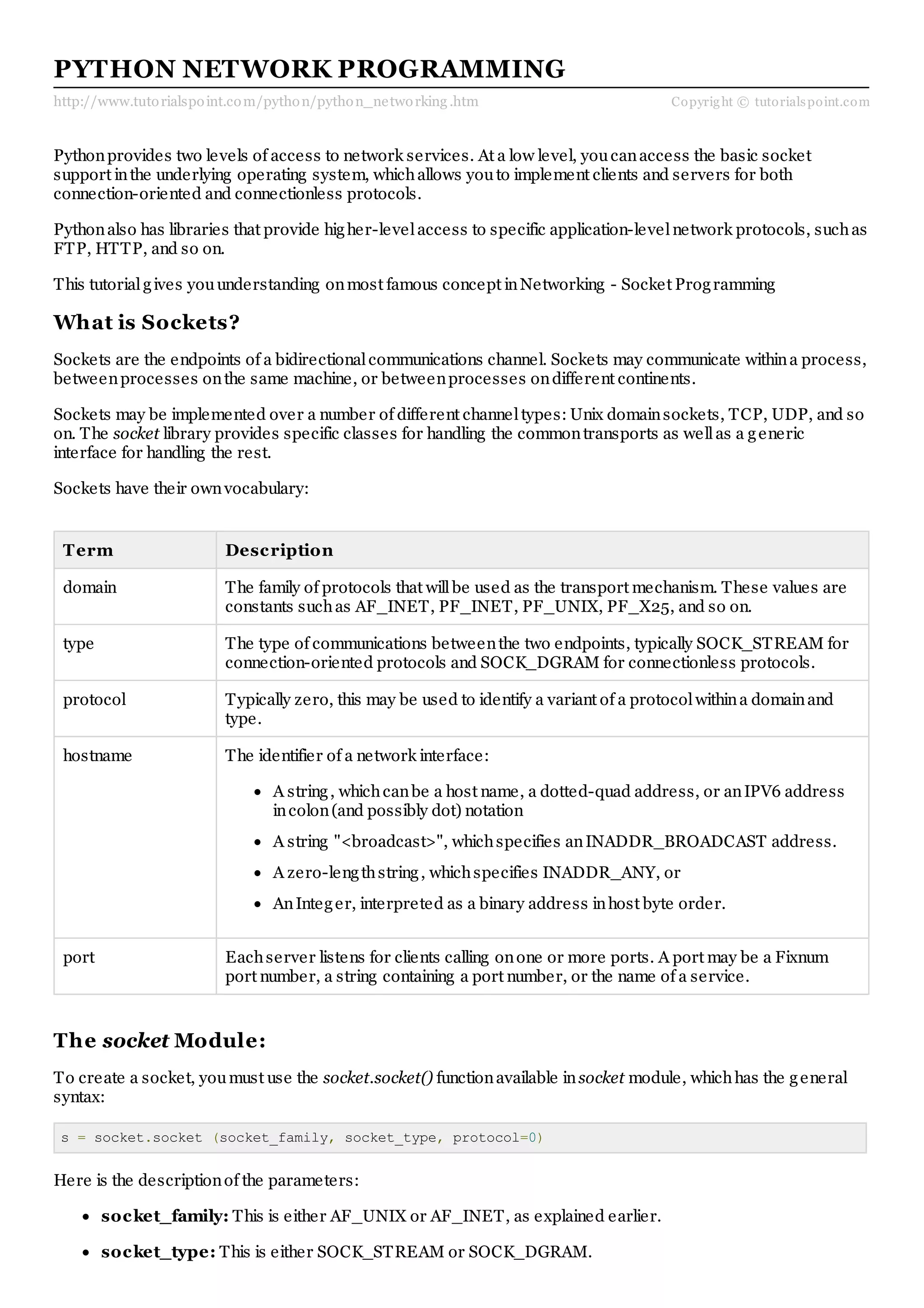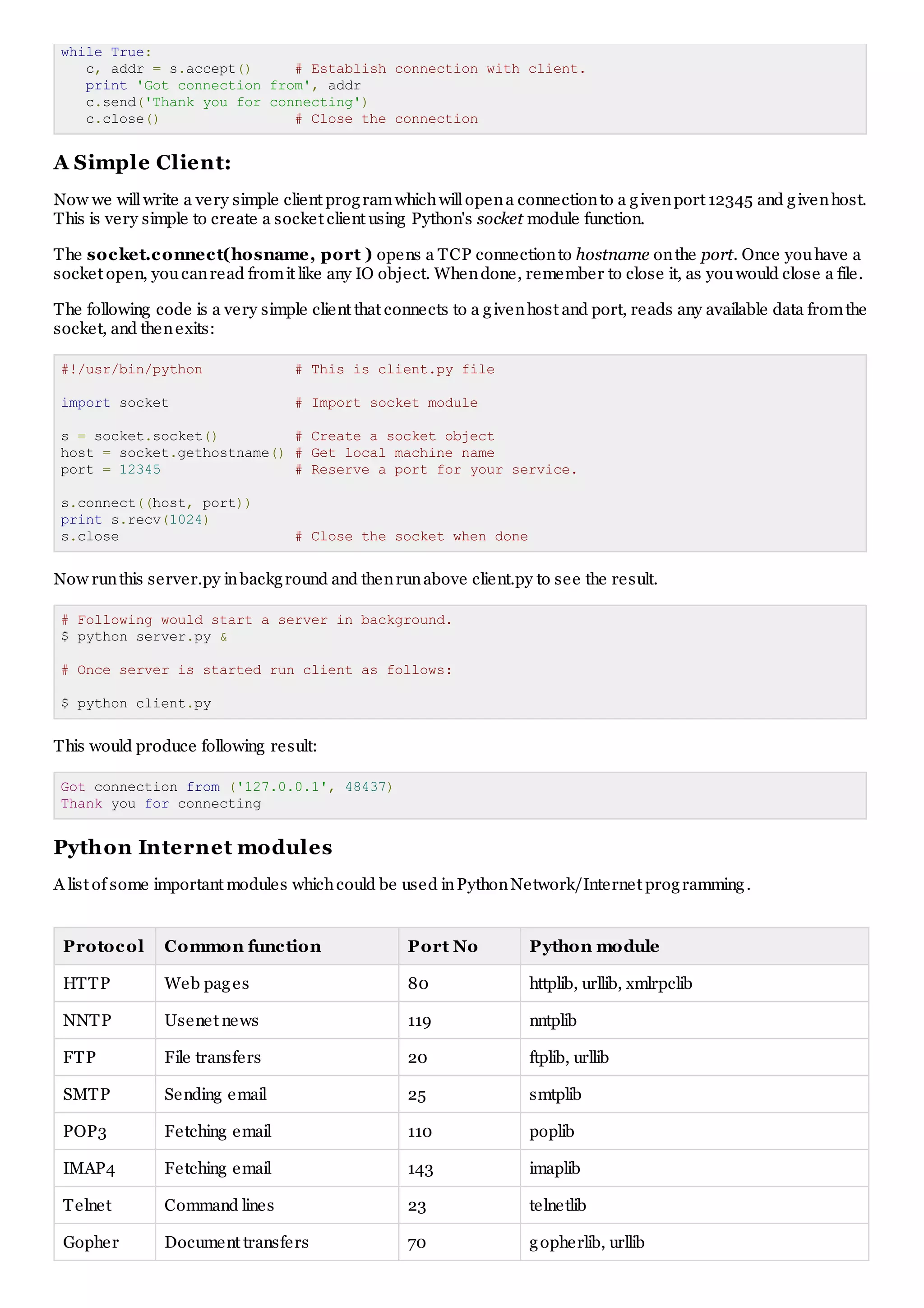This document provides an overview of network programming in Python. It discusses how Python allows both low-level socket access for building clients and servers as well as higher-level access to application protocols like FTP and HTTP. It then describes socket programming concepts like domains, types, protocols and functions for binding, listening, accepting, connecting, sending and receiving data. Simple client and server code examples are provided to demonstrate creating a basic socket connection between two programs. Finally, commonly used Python network modules for protocols like HTTP, FTP, SMTP and more are listed.



